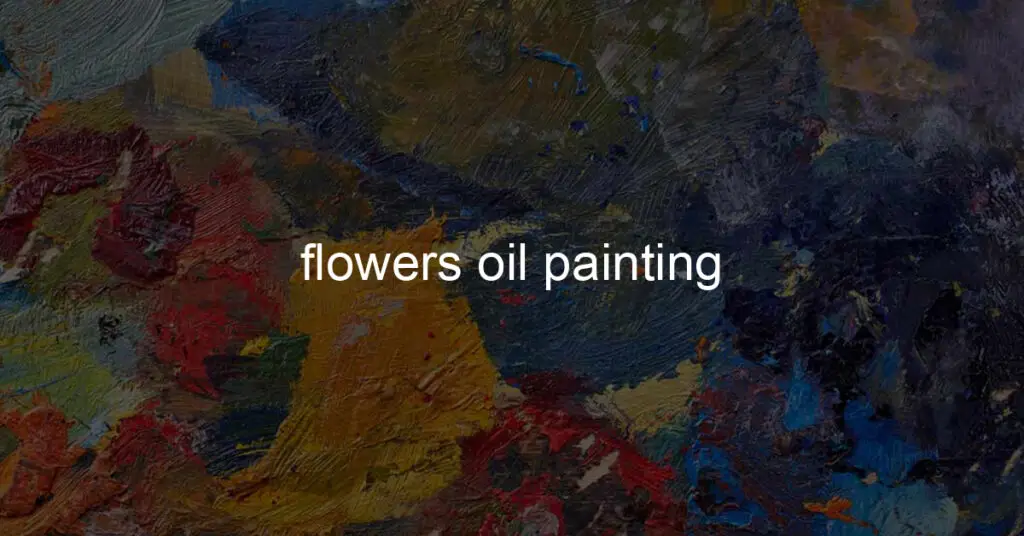Introduction to Flower Oil Painting
The medium of oil has been celebrated for centuries for its versatility and depth. When used to depict the inherent beauty of flowers, the result can be exquisite. Oil paints provide a richness of color that makes petals come alive, vibrantly capturing the various shades and hues of nature.
Flower oil painting, therefore, becomes not only an exploration of the floral subject but also a deep dive into the vast possibilities of the medium itself. Whether you’re a seasoned artist or a beginner, there is always more to learn and explore in this enchanting field.
Choosing the Right Oils and Materials
The array of oil paints and brushes available can seem overwhelming, particularly for newcomers. However, understanding their attributes can significantly enhance your painting process. Oil paints come in different grades – professional and student. While professional paints offer high pigment concentration and a broad spectrum of colors, student paints are a budget-friendly alternative.
Brushes, too, vary significantly in their shape, size, and bristle type, each designed for a specific purpose. Even the choice of the palette can impact your painting, as different materials can affect the mixing and application of oil paint.
Understanding Color Theory in Flower Painting
Mastering color theory is an ongoing process for every artist. It begins with understanding the color wheel and continues into the complex relationships between hues, shades, and tints. In flower oil painting, color theory plays an integral role.
It helps artists achieve depth and perspective, bring focus to a particular element, and even evoke specific emotions. By learning to manipulate color relationships, you can ensure that your flowers do not merely exist on the canvas, but come alive.
Selecting Your Subject: Different Types of Flowers
Flowers, with their endless shapes, sizes, and colors, provide a rich variety of subjects for oil painting. From the romantic allure of roses to the intricate elegance of orchids, each flower presents unique opportunities and challenges.
Some artists may choose their subjects based on color or form, while others might be inspired by a flower’s symbolism or seasonal availability. Whatever the choice, the key is to study your subject thoroughly, understand its character, and strive to capture its essence on your canvas.
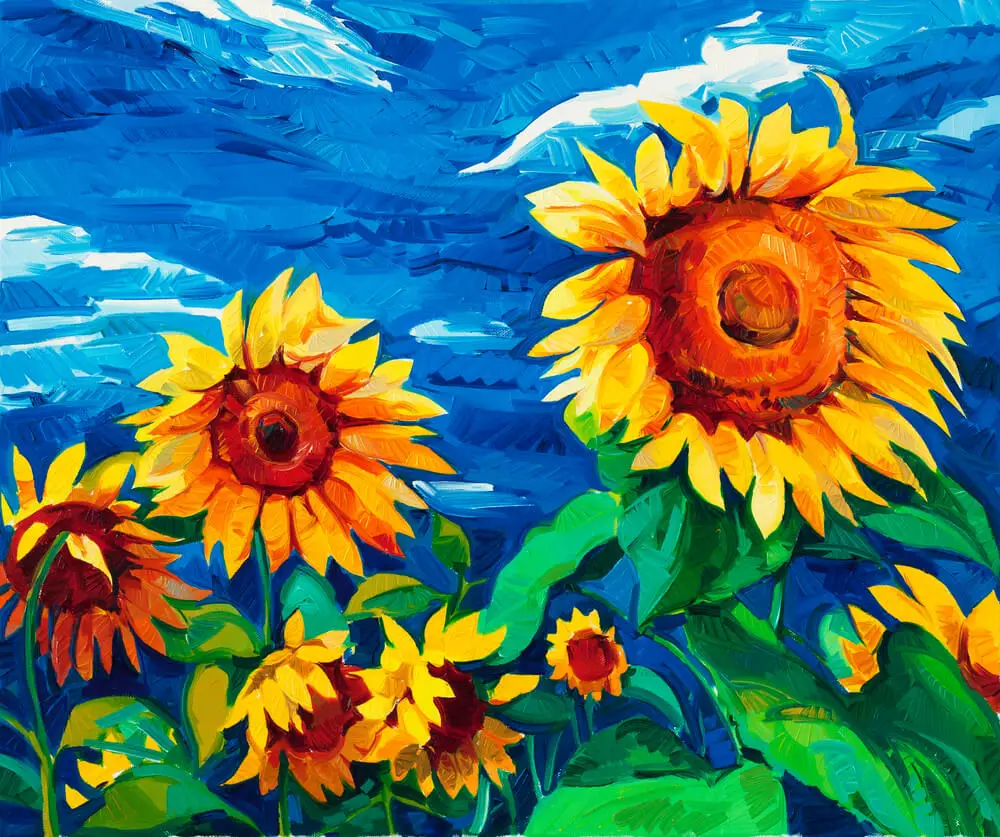
Sketching Your Flower Composition
Sketching is a crucial preparatory stage in the painting process. It allows you to plan the composition, positioning, and scale of your flowers before committing them to the canvas. By resolving these factors in the sketching phase, you can approach the painting with a clearer vision and greater confidence.
Sketching also helps you anticipate potential issues, such as compositional imbalance or perspective errors, thus saving valuable time and effort during painting.
Blocking in Basic Colors: Step by Step
Blocking in involves laying down broad areas of color to establish the tonal structure of your painting. This is not about precision but rather about setting the stage for the details that will come later. Starting with a toned canvas, you can block in your darks and lights, getting a rough sense of the painting’s overall color balance.
As you do this, remember that it’s easier to adjust colors at this stage than later in the painting process, so don’t be afraid to experiment and make changes.
Layering Techniques in Oil Painting
Layering in oil painting is the process of building up the painting from thin to thick layers, allowing each layer to dry before applying the next. This is where the slow-drying nature of oils becomes advantageous. The first layers often focus on establishing values, with later layers introducing more intricate details and richer colors. Layering helps
create depth and volume, allowing for subtle gradations of color and a luminous effect that can make your flowers seem to glow from within. It’s a patient process but the resulting richness of color and texture can be well worth the wait.
How to Paint Different Textures: Petals vs Leaves
Every flower is a world of textures waiting to be explored. Smooth, delicate petals; veined, robust leaves; rough, woody stems – each element contributes to the overall visual experience. Painting different textures involves varying your brushwork, from the broad, sweeping strokes for a leaf’s surface to the fine, precise touches for the veins on a petal.
You might use palette knives to create impasto effects or thin your paints for smooth, translucent layers. Experimenting with these tools and techniques can add a tactile dimension to your flower oil painting.
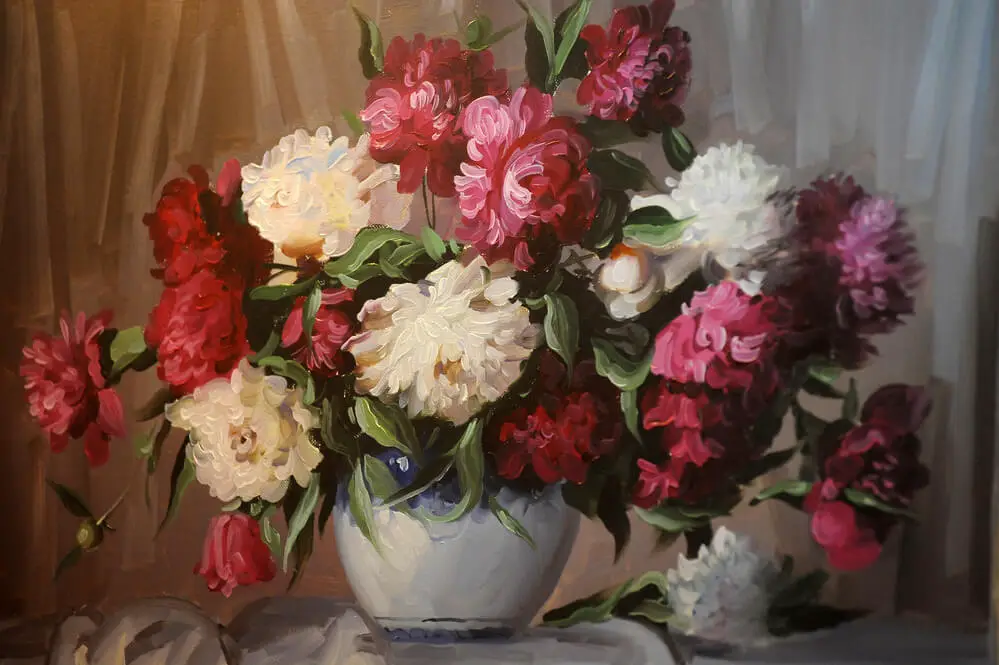
Capturing Light and Shadow in Your Flower Painting
Light and shadow are powerful tools in an artist’s arsenal. They shape the viewer’s perception of form, depth, and space, turning a two-dimensional canvas into a three-dimensional visual experience. In flower oil painting, observing how light interacts with your subject can be the key to realism.
Notice where the light is strongest, where it fades into shadow, how it changes the colors of your flowers. Pay attention to cast shadows too, as they can help ground your flowers in space and create a sense of interaction among different elements.
Developing Details: From Stamen to Petal Tips
While a broad view of your subject is necessary, the magic often lies in the minutiae. The intricate patterns on a petal, the tiny pollen grains on a stamen, the subtle transitions of color – these are the details that can make your painting come alive.
But remember, it’s not just about adding as many details as possible. It’s about knowing which details to highlight and which to suggest, which to leave sharp and which to blur. This selective focus can guide your viewers’ attention and help create a more engaging visual narrative.
Maintaining Color Vibrancy in Your Flower Paintings
Flowers are nature’s fireworks, bursting with vivid colors. Preserving this vibrancy in your oil paintings can be a challenge, especially as oil paints can darken or become dull over time. But there are ways to mitigate this. Using high-quality, lightfast paints can ensure color stability.
Glazing with transparent colors can add a luminous quality. Even your choice of medium can affect color vibrancy; some mediums can enhance color saturation while others can give a more matte finish. Regularly cleaning your brushes can also prevent unintentional color mixing and keep your colors pure.
Mastering the Art of Floral Still Life
Floral still life is a genre that demands both technical skill and creative insight. It involves arranging flowers (often with other objects) in a thoughtful composition, then capturing this arrangement in oil paint.
The composition can be as simple or complex as you wish, but it should always be balanced and harmonious. Consider how different elements relate to each other in terms of size, color, and texture. Play with different lighting scenarios to create interesting shadows and highlights.
Above all, infuse your painting with your personal touch, because that is what will set your floral still life apart.
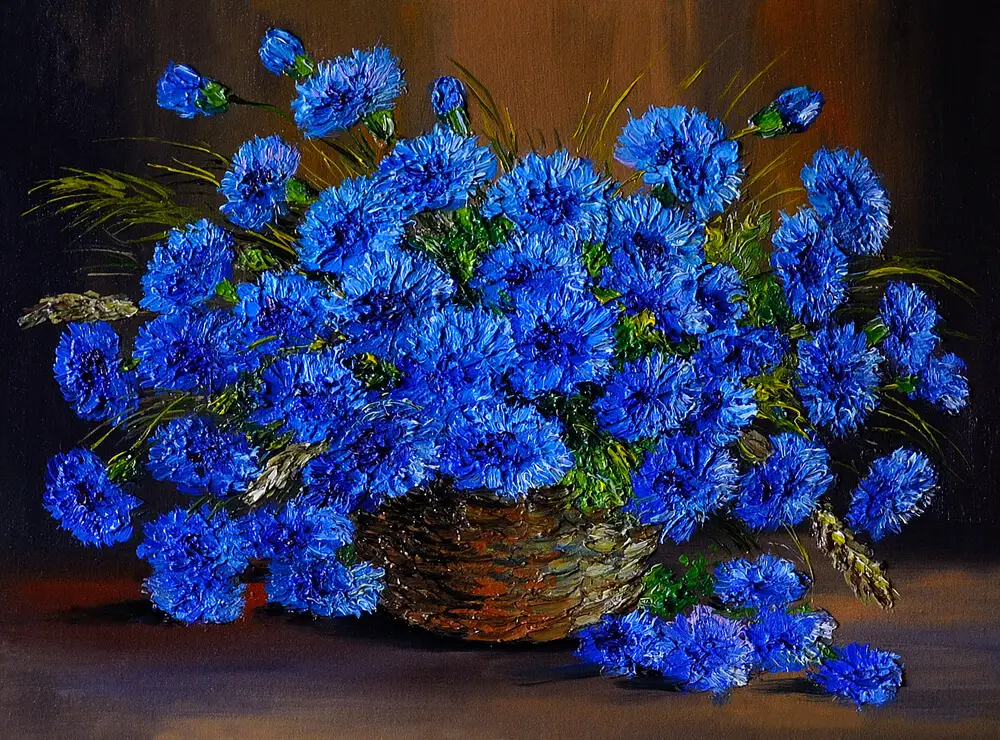
Common Challenges and How to Overcome Them
Painting flowers in oil can pose numerous challenges, from color mixing to brush control to creating a sense of depth. It’s natural to encounter obstacles along your artistic journey, but don’t let them discourage you.
Instead, see them as opportunities to learn and grow. Don’t be afraid to experiment, make mistakes, and get your hands dirty (literally!). Seek advice from more experienced artists, take workshops, read books. Practice as much as you can, because the more you paint
the better you’ll become. But most importantly, remember to enjoy the process. After all, painting is not just about the end product, but the journey of creation itself.
Inspirational Flower Oil Paintings and Their Artists
The art world is rich with stunning flower oil paintings, each a testament to the artist’s talent and vision. From the vibrant sunflowers of Van Gogh to the tranquil water lilies of Monet to the monumental flowers of Georgia O’Keeffe, these masterpieces continue to inspire generations of artists.
Studying these works can provide valuable insights into different techniques, color schemes, and compositional strategies. You might even find yourself inspired to try new approaches, push your boundaries, and develop your unique artistic voice.
Maintaining and Caring for Your Flower Oil Painting
Once your flower oil painting is complete, it’s crucial to ensure its longevity. This involves several steps, from drying and varnishing to framing and hanging. The drying process can take several weeks or even months, during which your painting should be kept in a safe, dust-free environment.
A layer of varnish can protect your painting from dust, sunlight, and other potential damages. Framing your painting can provide physical support and also enhance its aesthetic appeal.
Finally, when hanging your painting, choose a location away from direct sunlight, high humidity, or extreme temperature changes. With proper care, your flower oil painting can be enjoyed for many years to come.
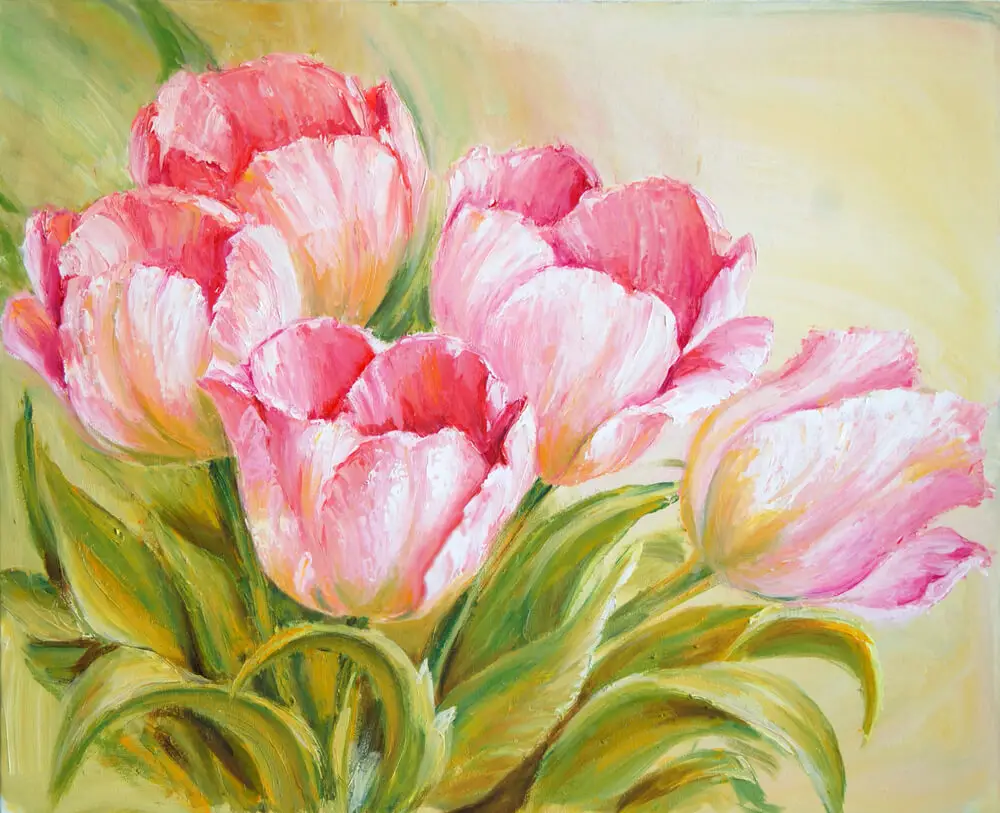
Conclusion: The Art and Joy of Flower Oil Painting
The art of flower oil painting is a multifaceted exploration of nature’s beauty through the versatile medium of oil paints. It is a journey that involves not only technical skills like understanding color theory, mastering brush techniques, or developing textures but also a deep appreciation for the subject itself – the humble yet stunning flower. This art form invites us to study flowers in all their intricate detail, to observe their interaction with light and shadow, and to capture their vibrant colors on canvas.
Along this journey, we may encounter challenges, but these are opportunities for growth and learning. We can draw inspiration from masterpieces of floral art and strive to imbue our works with our unique artistic voice. And once our creation is complete, we ensure its longevity with proper care and preservation.
The beauty of flower oil painting lies not only in the end product but in the process itself – the thoughtful observation, the patient layering, the joyous mixing of colors, the gradual unfolding of a bloom on canvas. So, whether you’re a seasoned artist or a beginner, embrace this journey with curiosity, patience, and joy. After all, every brushstroke brings you closer to the heart of a flower, and perhaps, a little closer to your own.

